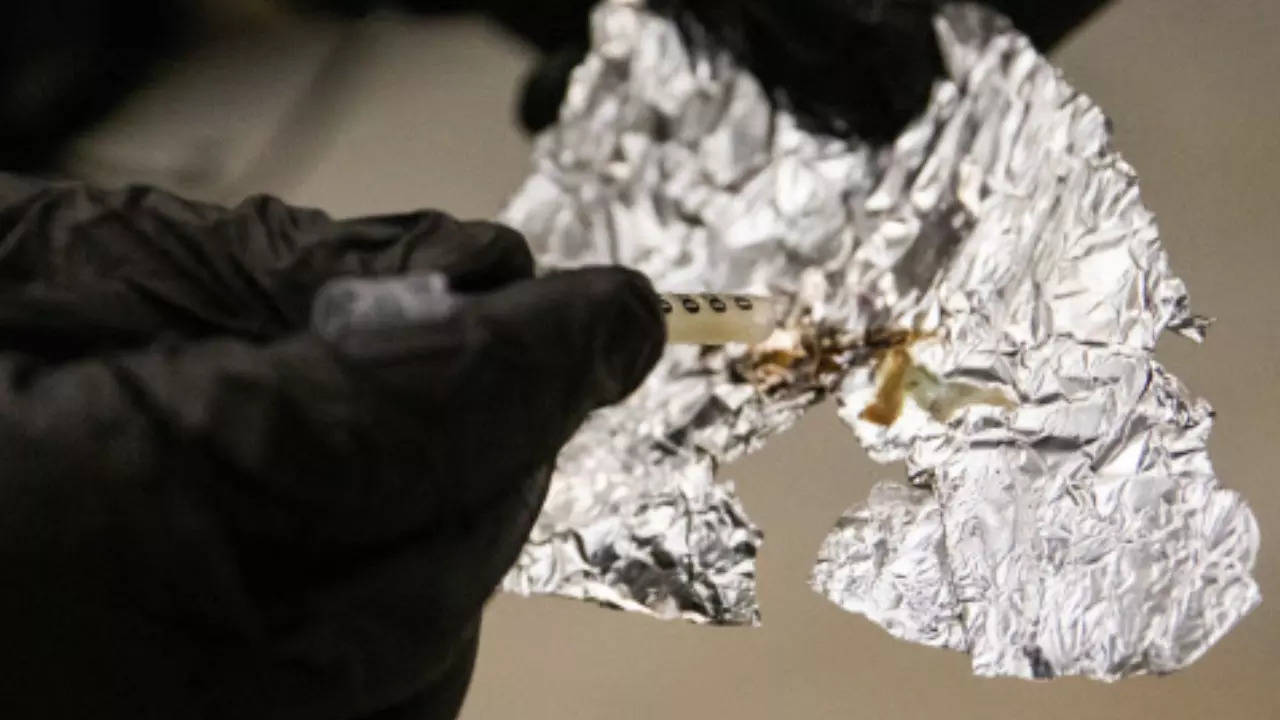Fentanyl Overdose: Study finds new method to reverse effects of fentanyl | India News - Times of India
 [ad_1]
[ad_1]

LOS ANGELES: Researchers have discovered a new way to reverse the effects of fentanyl, which is 50 to 100 times stronger than morphine.
Their research, which was published in the Journal of Medicinal Chemistry, could lead to a new method of reversing overdoses, either through a new product or by working in tandem with naloxone.
According to the Centres for Disease Control, 100,000 Americans die each year from overdoses, the majority of which are caused by the use of synthetic opiates such as fentanyl. While naloxone, the only antidote for opiate overdose, is becoming more widely available, it is less effective against fentanyl-class synthetic opioids.
"The synthetic opiates bind very tightly to the opioid receptors," said Alex Straiker, senior research scientist for the Gill Center for Biomolecular Science. "Naloxone must compete with opioids for the same binding site in the central nervous system to cancel out an overdose. But during a fentanyl overdose, naloxone and fentanyl bind to different sites, meaning there is no competition. We wanted to see if a negative allosteric modulator could reverse the fentanyl effects."
Straiker began measuring the effect of opioid receptors on a signalling molecule called cAMP. Fifty structurally related molecules were tested chemically to identify which compounds showed the most promise to be an effective negative allosteric modulator.
Researchers found cannabidiol, or CBD could behave as a negative allosteric modulator at the binding site. However, high concentrations were necessary during initial testing. Researchers modified the cannabidiol structure to be more effective and found that in the in vitro – tests done on blood or tissue samples – diagnostics, it successfully reversed the effects of fentanyl.
"We've identified structural parts that are important for the desired antidote effect," Straiker said. "Some of these compounds are much more potent than the lead. We’ve worked with a third lab to model the binding site that may help identify additional compounds moving forward."
[ad_2]
Source link
https://worldnews2023.com/top-stories/fentanyl-overdose-study-finds-new-method-to-reverse-effects-of-fentanyl-india-news-times-of-india/?feed_id=42330&_unique_id=64b818e3dca6b
Their research, which was published in the Journal of Medicinal Chemistry, could lead to a new method of reversing overdoses, either through a new product or by working in tandem with naloxone.
According to the Centres for Disease Control, 100,000 Americans die each year from overdoses, the majority of which are caused by the use of synthetic opiates such as fentanyl. While naloxone, the only antidote for opiate overdose, is becoming more widely available, it is less effective against fentanyl-class synthetic opioids.
"The synthetic opiates bind very tightly to the opioid receptors," said Alex Straiker, senior research scientist for the Gill Center for Biomolecular Science. "Naloxone must compete with opioids for the same binding site in the central nervous system to cancel out an overdose. But during a fentanyl overdose, naloxone and fentanyl bind to different sites, meaning there is no competition. We wanted to see if a negative allosteric modulator could reverse the fentanyl effects."
Straiker began measuring the effect of opioid receptors on a signalling molecule called cAMP. Fifty structurally related molecules were tested chemically to identify which compounds showed the most promise to be an effective negative allosteric modulator.
Researchers found cannabidiol, or CBD could behave as a negative allosteric modulator at the binding site. However, high concentrations were necessary during initial testing. Researchers modified the cannabidiol structure to be more effective and found that in the in vitro – tests done on blood or tissue samples – diagnostics, it successfully reversed the effects of fentanyl.
"We've identified structural parts that are important for the desired antidote effect," Straiker said. "Some of these compounds are much more potent than the lead. We’ve worked with a third lab to model the binding site that may help identify additional compounds moving forward."
Comments
Post a Comment